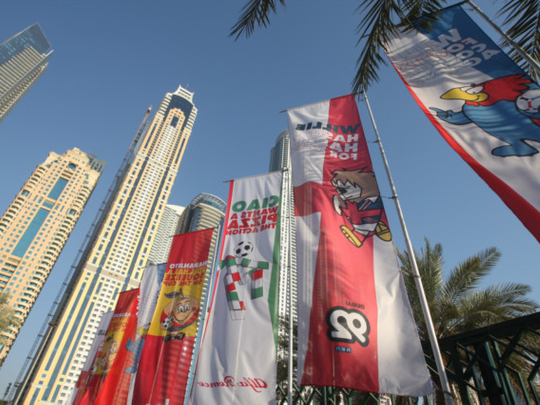
Dubai
With the World Cup kick-off just days away, global brands have upped their campaign tempo to a fever pitch. The jingles are heard loud and clear on the air waves, while commercials sporting football start are getting saturation coverage on all broadcasts. Marketing campaigns are leaving their imprint on the local print media as well.
But a high-profile campaign may not be limited to the mega-brands. If they play it right, advertisers with more limited budgets can still seek a share of the World Cup limelight and cash in. Here’s how — “Local organisations who lack the resources to advertise in traditional formats during the competition are looking for creative ways to extend their reach using social media as a platform,” said Yusuf Pingar, managing director at Spark*.
“These include online competitions, updates on the progress of the tournament and spot features on player and teams — this level of interaction is designed to keep the consumer’s interest.
“It will be the first Fifa World Cup that will see branded social media conversations vying with TV broadcasts for total audience reach.”
That’s just it. Social/digital media has managed to level the playing field for advertisers, irrespective of the size of their marketing budgets.
“There are opportunities galore, especially on the activation front,” said Pingar. “Matches are going to be shown in cafés, restaurants, malls and other public places, so there is much that can be done to engage with audiences.”
Among specific categories, brands in the electronics, automotive and beverages have been quick on the digital uptake. Digital platforms will also place an onus on “interactive promotions”, and there will also be a defining role for video-related content on social media platforms. “This will need to be easy to share to fuel the conversations that will take place throughout the social media sphere during the competition,” said Pingar.
Sure, the sheer number of digital platforms out there might make the choice of where to spend on ads difficult. Even here, potential advertisers can follow a simple rule.
“We have seen the greatest opportunity in platforms that enable timely and relevant visibility around key games and key moments during the tournament,” said Justin Mlynarski, regional digital director — GCC at UM.
“So Twitter promoted trends, day part-bidding on YouTube and search are particularly powerful. In addition, given the huge volumes of conversation and passion social platforms offer, [there’s] a huge opportunity for brands to fuel and to proactively participate and drive engagement.
“It’s difficult to put a percentage vis-à-vis cost saving [compared with campaigns that run on traditional media]. What we can do is demonstrate very clear performance through digital and demonstrate how integrated planning can multiply the return on investment of both on- and off-line investments at key moments.”












